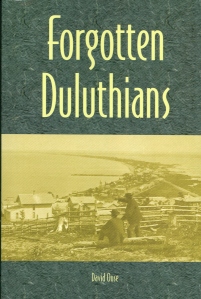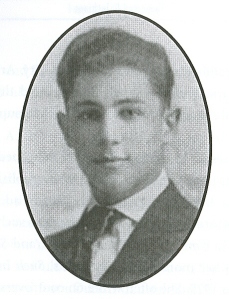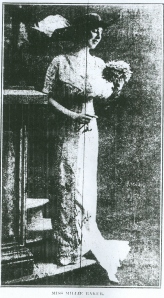
From the Duluth Public Library slide collection
Clinton Francis Russell was born in Duluth on October 8, 1895. His parents were Newell F. Russell and Isabelle J. Russell. Newell was born on a farm near Rush City, Minnesota, on July 16, 1869, and moved to the Duluth area in 1888. In that year, he founded, along with Henry Bridgeman, the Bridgeman-Russell Co. Isabelle came to Duluth from Michigan about 1890 and she and Newell were married in November of 1891. They had three children–Earl C., Clinton F., and Myrtle. They lived at several addresses in Duluth–309 Mesaba Avenue, 453 Mesaba Avenue (Munger Terrace), 5518 London Road, and 4440 London Road.
Clinton attended public elementary schools in Duluth and Duluth Central High School. In 1916, he began studies at Syracuse University in Syracuse, New York. At the outbreak of World War I, Clinton enlisted in the Army. Following the war, he returned to Syracuse to resume his studies. Clinton married Marion Ruth Jones, who went by Ruth, in Port Byron, New York, in 1920. They moved to Duluth and lived at 2132 East Fifth Street. Clinton worked at various jobs for the Bridgeman-Russell Co.
Clinton lost his sight around 1924 in an accident in which an automobile tire exploded in his face as he was repairing it. He didn’t play golf for several years after the accident, but tried it again when he was visiting relatives in California. He began playing at Ridgeview Country Club in Duluth and started taking lessons from the pro, Sammy Belfore. He began to count on his caddy teeing up the ball, adjusting his stance for direction, and lining up the club face. Some of his caddies at Ridgeview were Jim Koehler Sr., Dick Kohlbry, Bruce Schwartz, Jerry Weld, and Bob Hammerstrom.
Continue reading →








